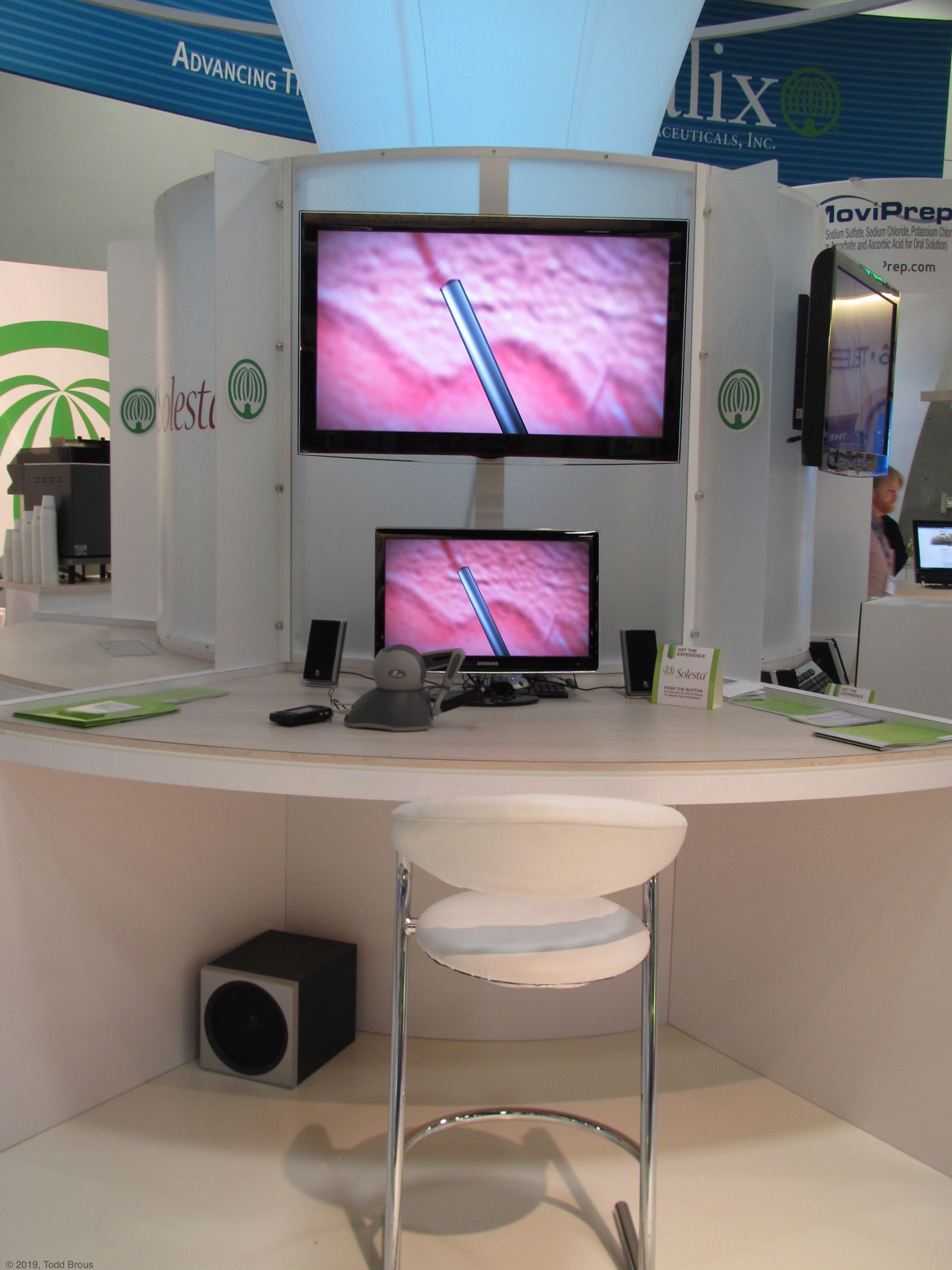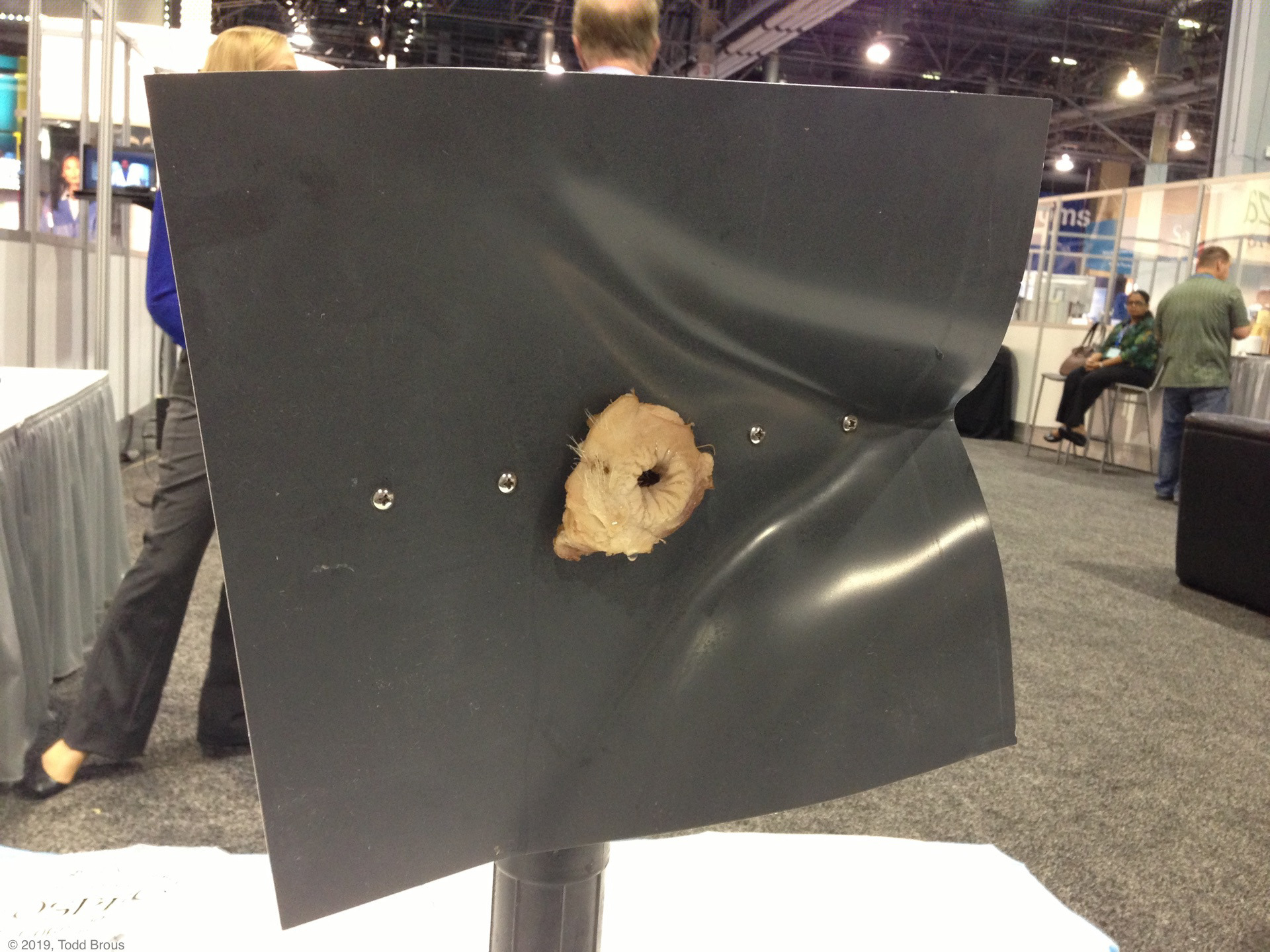Challenge: Create an interactive installation to help demonstrate, sell, and train doctors on the benefits and procedures for administering a new treatment for Fecal Incontinence.
Requirements: Less than 4 weeks of production time before initial Medical Conference deadline and... an insanely small budget. The original Agency Brief called for a VR-based solution where the user would either wear a VR Headset or use Stereoscopic Shutter Glasses while standing in front of a rear-projection screen.
Solution: My team designed and delivered an interactive digital simulation incorporating components of the actual medical equipment utilized in the procedure. We replaced the VR Head Mounted Display with a custom designed "Anoscope Box" that offered viewers the experience of looking through and handling the actual medical device.
By using a Force Feedback controller, doctors were able to experience how the procedure would feel as they inserted a special needle into the virtual patient. Correct and incorrect performance was measured and displayed as if it was a score on a video game. Additional kiosk stations were setup to provide a large-scale demonstrations of the procedure. The interactive system was built in Unity3D.
A custom SLA 3D printed handle was attached to the Force Feedback controller to support the actual syringe.
The delivered experience gave the doctors a sensation of the forces they would need to properly puncture the skin in the correct locations and administer the drug at the correct injection site depths. If the virtual needle moved through the wrong tissue, which would cause extreme pain in a live patient, the controller would gently vibrate.














I pitched a future version of this simulator that would include a redesigned force feedback syringe but... unfortunately for us... Salix chose to go with a more "hands on approach" that utilized "pig rectums supported in a jig". This solution allowed doctors to perform the actual procedure, feel the actual syringe and the actual force needed to inject the medication.
Sorry folks... Virtual Reality cannot compete with Actual Reality!
Note: There was a significant tradeoff with this. There were strict bio-hazard, facility preparation, and cleanup procedures needed for all of this... but it was a more invested approach towards true "doctor training", and less of a marketing tool.

